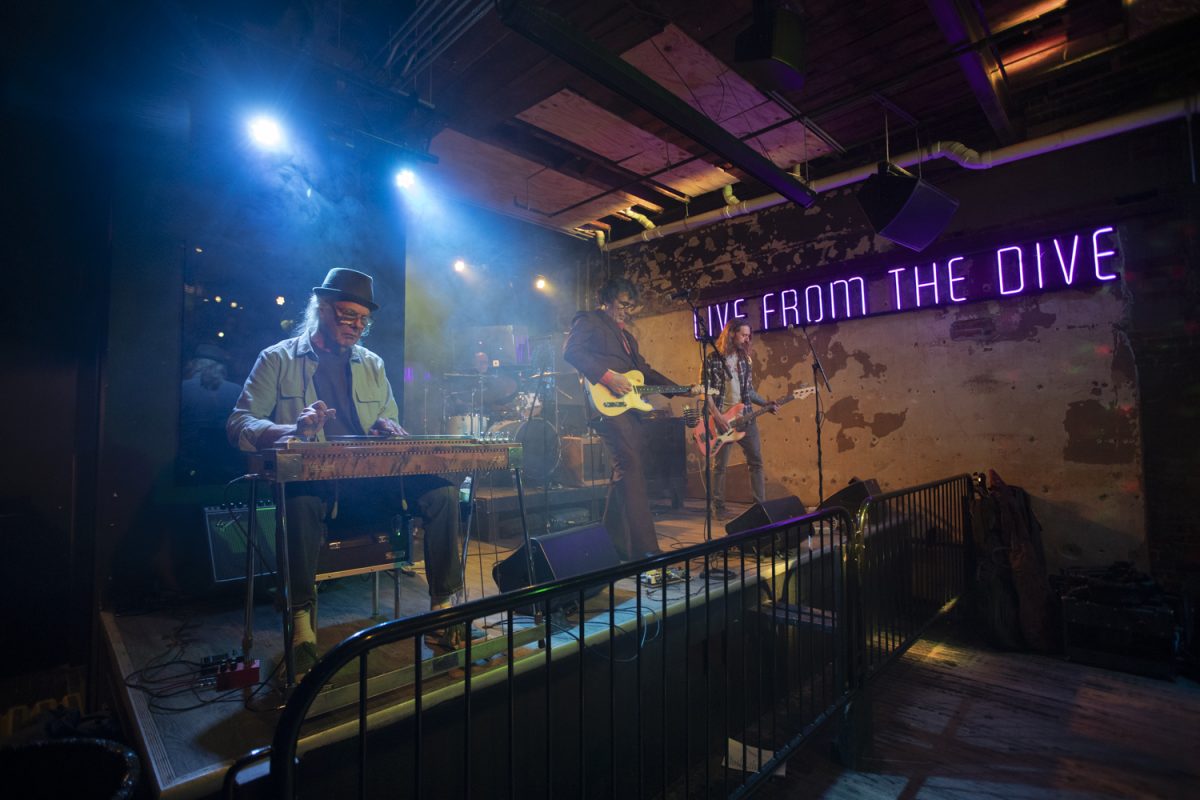Durga Chew-Bose’s début book of essays, Too Much and Not the Mood, has no decipherable beginning, middle, or end. Fourteen prose pieces are tied together by a breadth of personal experiences, such as growing up a first-generation member of the First Nations in Canada and living in the United States as a Canadian.
This Q&A discusses the origins of Too Much and Not the Mood, her take on the ever-changing landscape of nonfiction, as well as her writing process. She will read at 7 p.m. today at Prairie Lights, 15 S. Dubuque St.
Daily Iowan: The title comes from Virginia Woolf’s A Writer’s Diary. What was the reasoning behind the title, and how has Virginia Woolf inspired you?
Chew-Bose: I read the entry a couple years before I started working on the collection in earnest. The string of words flared up in some ways, and I felt moved by them — it compulsively underlined my collection. Virginia Wolf has been a big influence on me as a person but also in my writing. Her work is fiercely experimental but really contemplative. The more obvious Virginia Woolf can influence a writer [is her techniques of] carving out space, being true to one’s voice, and turning inward with a bit of attitude and opinion.
DI: The lyrical essay collection comprises 14 prose pieces. How did you go about arranging such an expansive collection? What was the genesis of the collection?
Chew-Bose: Arranging [the collection] is an apt word in this case, because some of the essays were published online prior to the release of Too Much and Not the Mood. I wanted to tidy them up and work on the endings of them in a way that would make more sense in a book. I definitely feel like the impulse for this project was to draw from living in the imaginary. Observing the moment or mining my past happens in an imaginary world, because it is impossible to rekindle something exactly how it was. The more specific I am, the more it will connect to the reader.
DI: You reference a lot of artists over the course of the collection. Where do you seek inspiration from as an author?
Chew-Bose: Definitely art when people interact with stuff. My various influences nudge me back to my work as a writer. A painter that I mention in the collection, Mamma Andersson, paints often from looking at crime scenes — I find the stillness of her work endlessly exciting. I love Helen Frankenthaler’s work because it feels like landscapes without 20/20 vision. The critic and painter Manny Farber has paintings that I feel resemble the way he wrote about films. Olivier Assayas and his film Summer Hours is like watching theater to me. I respond to the choreography in the scenes.
DI: What differences do you find when writing for readership or publication compared with personal projects?
Chew-Bose: It depends on the publication and what its style is. If it is more of a glossier magazine, it tends to have more kind of punched-up language or argumentative style. If it is for a newspaper film review, I ask how I can stretch the limits and make it more impressionistic. Anything from word count or getting your reader to the point quicker plays into it as well. With my style, I can be very focused on an image that might not have a glaring point. I think a relentless editor is really important because it forces you to focus your ideas but also spend the time to elaborate on a certain image and understand when it is time to say something as simply as possible, which is something I struggle with sometimes.
DI: Do you sometimes feel like a fiction writer writing nonfiction?
Chew-Bose: Publisher at Farrar, Straus, and Giroux Jonathan Galassi once said to me that I was a fiction writer writing nonfiction, and I think what he meant was that I stall on a moment for an extended period of time and not only turn inward but go back in time, which causes a more fictional element. When you are writing about your past, you try to recreate a mood, and that is fictional. It is like writing as an adult about childhood, which is impossible to articulate, because you did not have the experience and language.
DI: Can you talk about the dissolving lines between fiction and nonfiction?
Chew-Bose: I do think the lines are being dissolved, and that stuff excites me, because I feel like what is dangerous as a writer is to limit your imagination based on rules. There is a lot to learn with taking risks, because it enriches your experiences and writing. Those dissolving lines within genre are invigorating. When fiction and nonfiction blur, there is a certain honesty that emerges. Reading in search of rhythm helps me know when I have hit the right note.
DI: The collection references the importance of family and friendship. How did your relationships help shape the collection?
Chew-Bose: Where I come from is bedrock for me, so I could not just talk about growing up in Montréal but where my parents grew up as well. There is a side to [Too Much and Not the Mood] that feels like an ode to certain people, or a love letter to certain people, or a way of engraving certain experiences so that they do not disappear. So much of writing to me is committing moments to memory.
DI: What do you want your readers to leave with?







